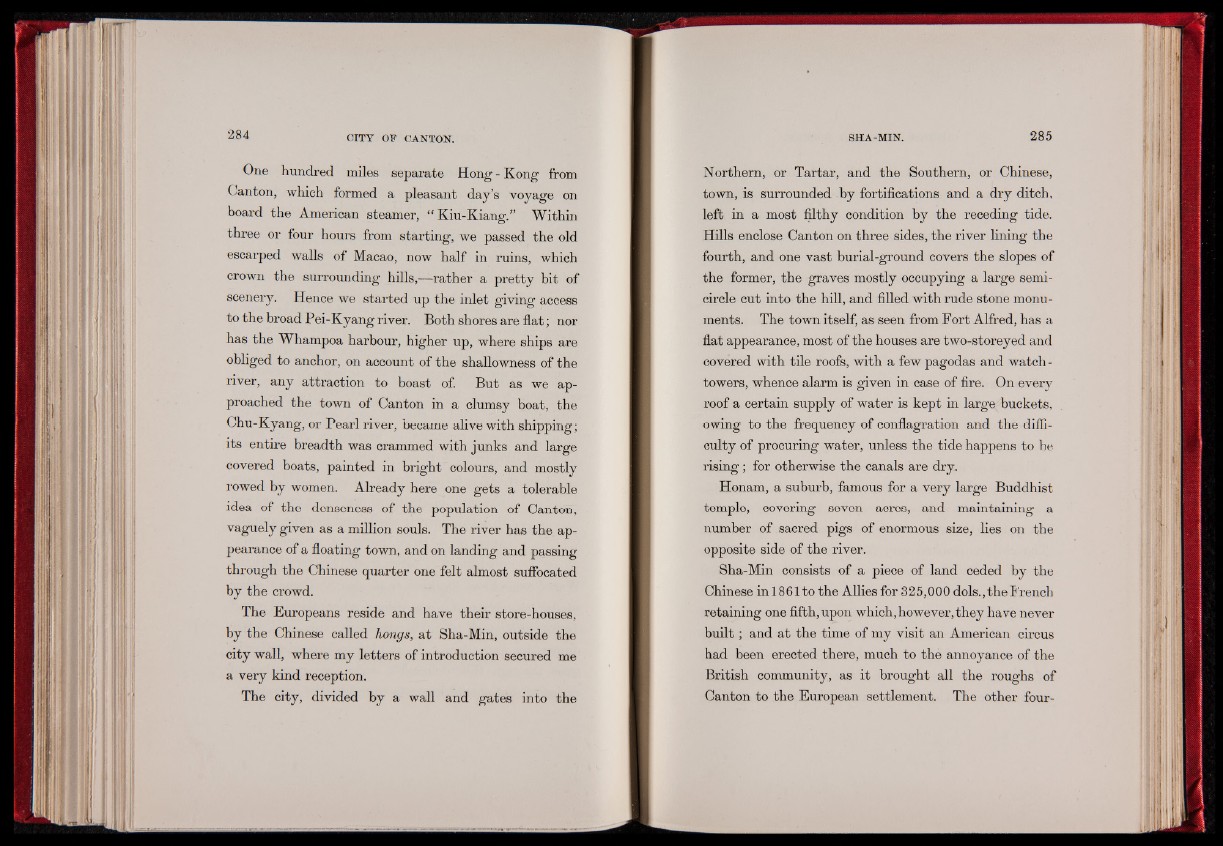
One hundred miles separate Hong - Kong from
Canton, which formed a pleasant day’s voyage on
board the American steamer, “ Kiu-Kiang.” Within
three or four hours from starting, we passed the old
escarped walls of Macao, now half in ruins, which
crown the surrounding hills,—rather a pretty bit of
scenery. Hence we started up the inlet giving access
to the broad Pei-Kyang river. Both shores are flat; nor
has the Whampoa harbour, higher up, where ships are
obliged to anchor, on account of the shallowness of the
river, any attraction to boast of. But as we approached
the town of Canton in a clumsy boat, the
Chu-Kyang, or Pearl river, became alive with shipping;
its entire breadth was crammed with junks and large
covered boats, painted in bright colours, and mostly
rowed by women. Already here one gets a tolerable
idea of the denseness of the population of Canton,
vaguely given as a million souls. The river has the appearance
of a floating town, and on landing and passing
through the Chinese quarter one felt almost suffocated
by the crowd.
The Europeans reside and have their store-houses,
by the Chinese called hongs, at Sha-Min, outside the
city wall, where my letters of introduction secured me
a very kind reception.
The city, divided by a wall and gates into the
Northern, or Tartar, and the Southern, or Chinese,
town, is surrounded by fortifications and a dry ditch,
left in a most filthy condition by the receding tide.
Hills enclose Canton on three sides, the river lining the
fourth, and one vast burial-ground covers the slopes of
the former, the graves mostly occupying a large semicircle
cut into the hill, and filled with rude stone monuments.
The town itself, as seen from Fort Alfred, has a
flat appearance, most of the houses are two-storeyed and
covered with tile roofs, with a few pagodas and watch-
towers, whence alarm is given in case of fire. On every
roof a certain supply of water is kept in large buckets,
owing to the frequency of conflagration and the difficulty
of procuring water, unless the tide happens to he
rising; for otherwise the canals are dry.
Honam, a suburb, famous for a very large Buddhist
temple, covering seven acres, and maintaining a
number of sacred pigs of enormous size, lies on the
opposite side of the river.
Sha-Min consists of a piece of land ceded by the
Chinese in 18 61 to the Allies for 325,000 dols., the I 'rench
retaining one fifth, upon which, however, they have never
b u ilt; and at the time of my visit an American circus
had been erected there, much to the annoyance of the
British community, as it brought all the roughs of
Canton to the European settlement. The other four